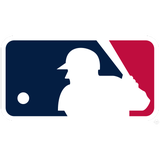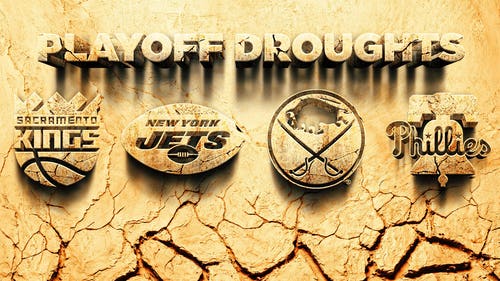
Riddle me this: How does Coors Field make Morneau better road hitter?
Justin Morneau is off to a great start this year; of course, this is also his first year playing for the Rockies. Most people enjoy playing half their games in a park that greatly inflates offense like Coors Field. However, his production on the road has been equal to his production in Colorado, as shown by the park-adjusted metric wRC+. How did hitting in Coors Field make him a better hitter on the road?
Morneau has a nice .326/.357/.550 slash line at home. That's 21 percent better than league average. His .279/.319/.488 road average doesn't look that great, but when compared to the rest of the National League, it's just as valuable as his home slash line (120 wRC+). His home park still has something to do with that road work, though.
It might be more that Coors Field has freed him of the shackles that Target Field in Minnesota put on him. "I think I let the park play into my approach a little bit too much the last couple of years," Morneau admitted before a game with the Giants in mid-June. "I thought I had avoided it, but I wasn't as comfortable using the whole field ... most good hitters use the whole field."
He's right about good hitters, but we'll add a caveat -- using the whole field with power is important. In order to remove the slap hitters like Adeiny Hechavarria and Jarrod Dyson from the top of the list, we'll make league-average power a prerequisite for making this list of spray hitters. Let's sort the list by the percentage of outfield balls in play that go to the center or opposite fields. The league averages a .145 Isolated Slugging Percentage (slugging minus batting average), so let's cut the list off there. Let's go to 21 hitters -- you'll see why. Here are your powerful spray hitters who play regularly:
| Name | pull% | center+oppo% | ISO |
|---|---|---|---|
| Christian Yelich | 24.6% | 75.4% | 0.159 |
| Adam Lind | 29.2% | 70.8% | 0.175 |
| Corey Dickerson | 30.1% | 69.9% | 0.281 |
| Michael Morse | 31.7% | 68.3% | 0.244 |
| Scooter Gennett | 32.3% | 67.7% | 0.155 |
| Ryan Braun | 32.6% | 67.4% | 0.216 |
| Chris Owings | 33.2% | 66.8% | 0.178 |
| Michael Cuddyer | 34.3% | 65.7% | 0.183 |
| Todd Frazier | 34.3% | 65.7% | 0.238 |
| Jonathan Lucroy | 35.1% | 64.9% | 0.195 |
| Pedro Alvarez | 35.1% | 64.9% | 0.165 |
| Pablo Sandoval | 35.2% | 64.8% | 0.162 |
| Ryan Howard | 36.0% | 64.0% | 0.197 |
| Michael Choice | 36.1% | 63.9% | 0.156 |
| Brandon Crawford | 36.2% | 63.8% | 0.195 |
| Marcell Ozuna | 36.3% | 63.7% | 0.188 |
| Justin Upton | 36.5% | 63.5% | 0.232 |
| Torii Hunter | 36.6% | 63.4% | 0.175 |
| Anthony Rendon | 36.7% | 63.3% | 0.191 |
| Matt Adams | 37.1% | 62.9% | 0.183 |
| Justin Morneau | 37.1% | 62.9% | 0.209 |
This is a bit of a new thing for Morneau. "I've been trying to use the whole field a little bit more," he said, now that he's "in a place where I feel comfortable hitting the balls into the gap and using all the parts of the field."
The Coors outfield inflates batting average on balls in play more than any other outfield -- it's huge -- and you can see that teammate Corey Dickerson is also modeling what a spray hitter can do in that ballpark.
Morneau is going to the opposite field about as much as ever these days:
| Year | Oppo% |
|---|---|
| 2009 | 22.4% |
| 2010 | 26.7% |
| 2011 | 24.8% |
| 2012 | 23.2% |
| 2013 | 27.6% |
| 2014 | 27.6% |
Going the other way a bit more has helped Morneau across the board. He's shown power like this before, but this year, he has the best strikeout rate of his career. And that's come with the highest swing rate of his career, which is strange.
The resurgent slugger feels the new approach and new contact rates are related.
"When you look at the numbers, more pitches are away than they are in the zone," he said about making more contact by covering more of the plate with his opposite-field approach. As for the swinging? "It's not really a conscious effort to swing earlier, but maybe more trusting the location, trusting where I am hitting the ball, instead of looking for a ball to pull."
In other words, he's covering more of the plate.
He's swinging more at the pitch on the outer half this year. Here are the heat maps for his swing rates -- 2013 on top, 2014 below.


In a round-about way, swinging more (and making more contact) can come back to more power.
"If you show you're willing to go the other way, then teams have to start coming inside, just to get you off that outside ball," Morneau said. "Then you get some mistakes. When they're missing away, they're missing off the plate and there's not much you can do with it."
Morneau can't be blamed for the more pull-happy approach of his youth. "When you're a corner infielder, corner outfielder, you get paid for power," he said, "and if you're not seeing those results, you start changing things or do things to get them." So when he used to only swing at pitches on the inside half that he could really drive, and "wouldn't get held up in the outfield," he was thinking about power and his home park.
But now, his home park has helped him be a more complete hitter. He admitted that "there's no reason I couldn't have done this in Target Field," but is happy to make the change. As he said, "It's all part of the learning curve."








